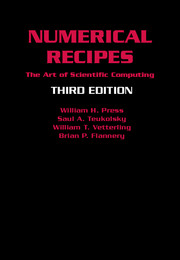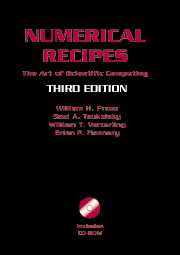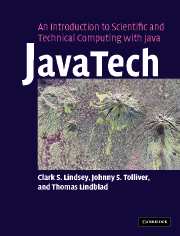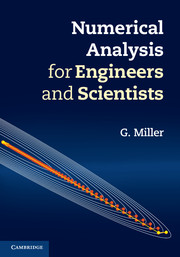Numerical Recipes 3rd Edition
Do you want easy access to the latest methods in scientific computing? This greatly expanded third edition of Numerical Recipes has it, with wider coverage than ever before, many new, expanded and updated sections, and two completely new chapters. The executable C++ code, now printed in colour for easy reading, adopts an object-oriented style particularly suited to scientific applications. Co-authored by four leading scientists from academia and industry, Numerical Recipes starts with basic mathematics and computer science and proceeds to complete, working routines. The whole book is presented in the informal, easy-to-read style that made earlier editions so popular. Highlights of the new material include:
a new chapter on classification and inference, Gaussian mixture models, HMMs, hierarchical clustering, and SVMs; a new chapter on computational geometry, covering KD trees, quad- and octrees, Delaunay triangulation, and algorithms for lines, polygons, triangles, and spheres; interior point methods for linear programming; MCMC; an expanded treatment of ODEs with completely new routines; and many new statistical distributions. For support, or to subscribe to an online version, please visit www.nr.com.
- Most comprehensive book available on scientific computing, now updated
- New routines for classification and inference HMMs and SVMs, computational geometry, ODEs, interior point methods for linear programming, and MCMC
- Over 600,000 Numerical Recipes products in print
Reviews & endorsements
"This monumental and classic work is beautifully produced and of literary as well as mathematical quality. It is an essential component of any serious scientific or engineering library."
Computing Reviews
"… an instant ‘classic,’ a book that should be purchased and read by anyone who uses numerical methods …"
American Journal of Physics
"… replete with the standard spectrum of mathematically pretreated and coded/numerical routines for linear equations, matrices and arrays, curves, splines, polynomials, functions, roots, series, integrals, eigenvectors, FFT and other transforms, distributions, statistics, and on to ODE's and PDE's … delightful."
Physics in Canada
"… if you were to have only a single book on numerical methods, this is the one I would recommend."
EEE Computational Science & Engineering
"This encyclopedic book should be read (or at least owned) not only by those who must roll their own numerical methods, but by all who must use prepackaged programs."
New Scientist
"These books are a must for anyone doing scientific computing."
Journal of the American Chemical Society
"The authors are to be congratulated for providing the scientific community with a valuable resource."
The Scientist
"I think this is an incredibly valuable book for both learning and reference and I recommend it for any scientists or student in a numerate discipline who need to understand and/or program numerical algorithms."
International Association for Pattern Recognition
"The attractive style of the text and the availability of the codes ensured the popularity of the previous editions and also recommended this recent volume to different categories of readers, more or less experienced in numerical computation."
Octavian Pastravanu, Zentralblatt MATH
Product details
September 2007Hardback
9780521880688
1256 pages
262 × 190 × 45 mm
2.06kg
37 tables
Temporarily unavailable - available from TBC
Table of Contents
- 1. Preliminaries
- 2. Solution of linear algebraic equations
- 3. Interpolation and extrapolation
- 4. Integration of functions
- 5. Evaluation of functions
- 6. Special functions
- 7. Random numbers
- 8. Sorting and selection
- 9. Root finding and nonlinear sets of equations
- 10. Minimization or maximization of functions
- 11. Eigensystems
- 12. Fast Fourier transform
- 13. Fourier and spectral applications
- 14. Statistical description of data
- 15. Modeling of data
- 16. Classification and inference
- 17. Integration of ordinary differential equations
- 18. Two point boundary value problems
- 19. Integral equations and inverse theory
- 20. Partial differential equations
- 21. Computational geometry
- 22. Less-numerical algorithms
- References.






